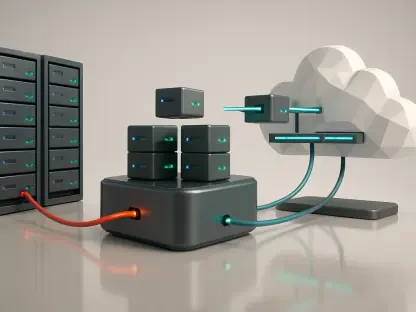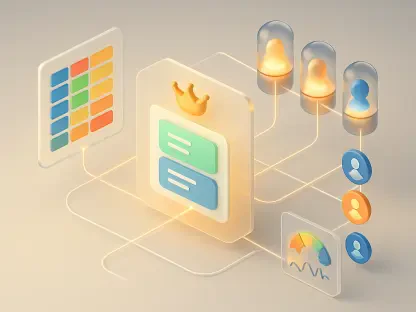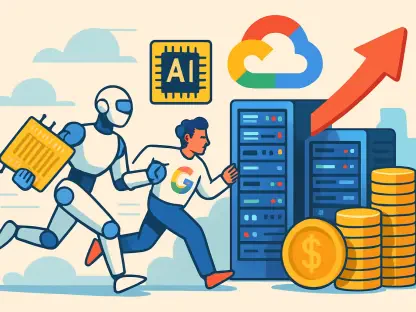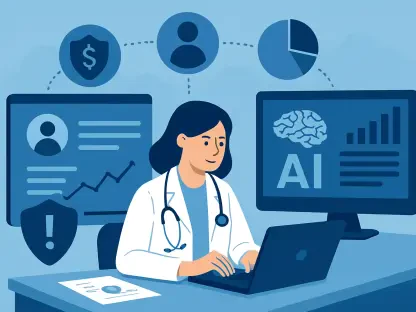What happens when a tool designed to make work easier ends up making colleagues question your skills? In today’s tech-driven offices, artificial intelligence (AI) is transforming how tasks are handled, promising efficiency and innovation, yet a startling undercurrent is emerging where employees using AI are often judged harshly by peers and superiors, casting a shadow over their competence and dedication. This feature dives into the hidden social costs of embracing AI at work, exploring why a productivity boost can come with a reputation hit.
The Hidden Cost of AI in Professional Settings
The significance of this issue cannot be overstated in a world where over 90% of companies report regular AI use among employees, according to a recent MIT report on business technology trends. As organizations rush to stay competitive, the way workers are perceived when leveraging AI tools is shaping career trajectories and team dynamics. This isn’t just about technology—it’s about how human biases intersect with innovation, often to the detriment of those who adopt it.
This social judgment penalty, as researchers term it, creates a paradox. AI can streamline complex projects, yet it risks labeling users as less capable or motivated. Understanding this dynamic is essential for anyone navigating the modern workplace, where technology and perception collide with real consequences.
Why Perceptions of AI Use Shape Careers
The rapid integration of AI into daily workflows has shifted workplace culture in unexpected ways. Studies reveal that employees using AI are often seen as taking shortcuts, even when their output is superior. This bias impacts not just individual reputations but also collaboration, as teams grapple with unspoken tensions over who uses what tools.
Beyond personal impact, these perceptions influence broader organizational trends. With many companies facing a 95% failure rate in formal AI pilot projects, as noted in MIT’s latest findings, the stigma around AI use adds another layer of complexity. Employees hesitate to openly adopt these tools, fearing judgment, which stalls progress on a larger scale.
The stakes are high when social biases undermine technological advancement. If left unaddressed, this trend could hinder innovation, leaving companies and workers caught between the promise of AI and the weight of outdated assumptions.
Digging into the Social Penalty of AI Reliance
At the core of this challenge is what experts call the “social evaluation penalty.” Research involving over 4,400 participants found that individuals using AI tools are consistently rated as less competent and diligent compared to those seeking help from colleagues. This perception stems from a deep-rooted bias, where AI is viewed as an unfair crutch rather than a legitimate resource.
Attribution theory, a psychological framework, explains this reaction. Observers often attribute AI use to personal shortcomings—like a lack of skill—rather than strategic decision-making. Unlike asking a coworker for input, which is socially accepted, relying on AI triggers harsher scrutiny, creating a double standard in how assistance is judged.
Context plays a role in softening this penalty. When AI is applied to tasks suited for automation, such as data analysis, criticism tends to lessen. Similarly, if peers also use AI, they are less likely to judge, suggesting that familiarity can chip away at negative stereotypes over time.
Real Voices and Workplace Realities
Insights from researchers paint a vivid picture of this struggle. One study author remarked, “AI assistance, despite its efficiency, is often seen as diminishing personal merit—a stigma not attached to human collaboration.” This perspective aligns with real-world behaviors, where many employees hide their AI use to avoid scrutiny, contributing to a “shadow AI economy” within organizations.
Anecdotes from the field underscore this tension. An anonymous worker admitted, “I keep quiet about using AI for presentations. I’d rather my team think I spent hours on it myself.” Such confessions, paired with data showing widespread unofficial AI use despite formal project failures, reveal a workforce wrestling with innovation under the weight of judgment.
These stories and statistics highlight a critical disconnect. While AI holds transformative potential, the fear of being seen as less capable drives secretive usage, stunting open dialogue and slowing the cultural shift needed for seamless tech integration.
Strategies to Dodge the AI Judgment Trap
Navigating this landscape requires practical steps to balance AI’s benefits with social perceptions. Start by aligning AI use with tasks where it’s widely accepted, like processing large datasets or drafting technical reports. This minimizes the risk of appearing overly reliant on tech for basic responsibilities.
Transparency, when handled carefully, can also help. In supportive environments, sharing how AI boosts efficiency—while emphasizing personal input—can normalize its role. Conversely, in judgmental settings, focus on showcasing the final product as a result of refined effort, sidestepping direct mention of the tools used.
Finally, fostering education within teams is key. Encouraging discussions or training on AI capabilities can demystify the technology, reducing stigma. Pairing AI outputs with visible human effort, such as seeking colleague feedback on generated content, further counters perceptions of over-dependence, blending innovation with traditional work values.
Reflecting on the Path Ahead
Looking back, the journey of AI in workplaces showed a clash between technological promise and human bias. The social evaluation penalty cast a long shadow, with many employees judged unfairly for leveraging tools that boosted their productivity. Organizations struggled, often failing to bridge the gap between formal initiatives and informal adoption driven by fear of stigma.
Moving forward, actionable change became the focus. Companies needed to prioritize cultural shifts, embedding AI education into training programs to reshape perceptions. Employees, too, had to advocate for transparency where possible, proving that tech and talent could coexist without diminishing personal merit. The road ahead demanded a collective effort to redefine assistance in the age of automation, ensuring that innovation no longer came at the cost of reputation.









